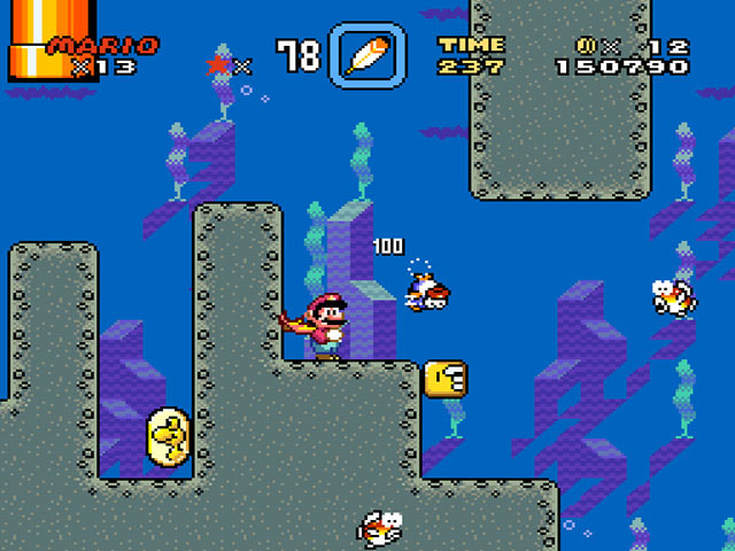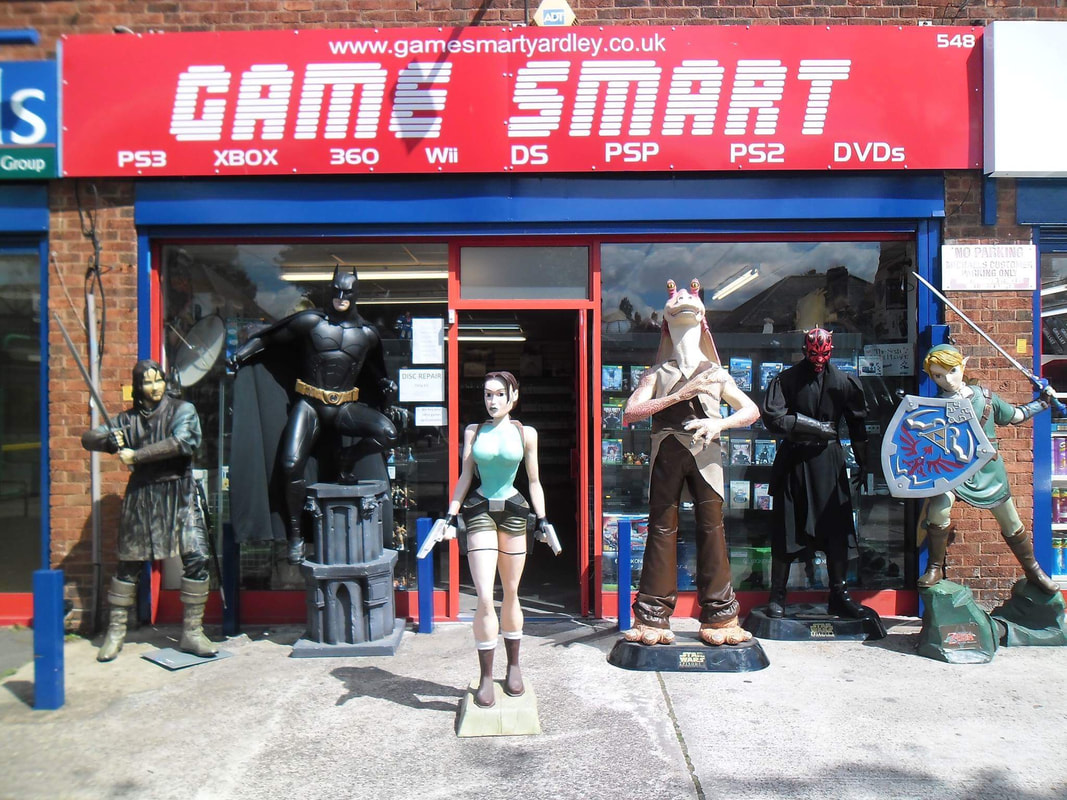|
Guest Blog by Carl B @ Carl's Blog
In the late 1980s, Nintendo was under pressure. Its 8-bit Famicom (Nintendo Entertainment System in the West) had been upstaged by Sega’s Genesis. Their black beauty was cooler, faster, better looking and had a wide library of games including hits such as Altered Beast, Alex Kidd in the Enchanted Castle and Golden Axe.
Despite the critical and commercial success of Super Mario Bros. 3, at the turn of the decade the world waited to see what Nintendo would come up with in response to Sega’s growing dominance. The Genesis had been released in October 1988 in Japan, just a week after Super Mario Bros. 3 had hit the shelves. However, the response from Nintendo wasn’t instant. The company spent more than two years perfecting its next hardware offering, the Super Famicom (Super Nintendo Entertainment System elsewhere) along with its launch titles. One of these was to be Super Mario World, which made its bow on November 21st 1990 in Japan amid fevered anticipation. When we rejoin Mario and Luigi, we found that they have left the Mushroom Kingdom for a much-needed holiday in Dinosaur land, but their vacation is interrupted by serial kidnapee Princess Toadstool being snatched by Bowser (for some reason or other). It’s fair to say that SMW doesn’t exactly take the series in a new direction when it comes to its plot, but if that’s why you’re playing it then frankly you’ve got the wrong game. After a couple of introductory moments, the player is quickly into the game, with Mario setting off from Yoshi’s House. What hits you first is how great this game looks. A gorgeous colour palette, vibrant sprites and clean, polished backgrounds are complemented by neat little touches such as the way Mario’s cap wafts up when he descends from a jump, combining to form a feast for the eyes. Then there’s the sound. Koji Kondo once again creates music that fits a given level perfectly, from echoey underground themes to the bouncy, frantic ‘athletic’ music of the forced-movement stages. Aesthetically, the game is timeless. The overworld map takes the original concept from SMB3 and extends it, allowing its layout to change as our hero progresses and uncovers new zones. The game also allows the player to access already-completed levels, whereas SMB3 didn’t have the capacity for backtracking to previous worlds at will. The levels scroll vertically and horizontally and include a perfect blend of well-placed obstacles and varied enemies which, in accordance with Nintendo’s famously-perfect learning curve philosophy, get progressively tougher as the adventure goes on. In many stages, the player is teased by the presence of dotted line blocks which, if solid, provide a mushroom or cape, allow access to out-of-reach areas or help suppress an enemy. These only become ! blocks when the corresponding switch palace is located, encouraging players to backtrack and re-enter levels. The end of most levels is marked by giant gateposts with a moving finishing line between them. The player is rewarded depending on how high the bar is when crossed, with a maximum of 50 points available. Once the player has amassed 100 points, Mario enters a mini game where up to eight extra lives can be won. Not that these should be needed, though, as players will earn far more lives than they lose for most parts. As well as collecting 100 coins within a single level, players can nab hidden 1-up mushrooms and exploit a top-secret area which yields infinite lives.
The abundant supply of lives makes it clear that while Nintendo wants players to be challenged, it also wants them to keep playing, beat the game and have tons of fun while they’re at it. The overworld map identifies levels with more than one exit with a red marker, which comes in handy for completionists looking to find each and every one. Discovery of a level’s secret exit almost always brings a reward that makes the player’s life easier – access to a switch palace or a shortcut through the map, for example – but it’s sometimes required to progress at all (Forest of Illusion, Star World). There’s great satisfaction to be had combing a level for its secret exit – knowing it’s there somewhere means you don’t quit until you find it. While many of the game’s secrets require a thorough exploration of each level, most are subtly signposted; literally, in the case of one stage. To explain this, let’s remind ourselves that what the Mario series has always done very cleverly is to set out a series of ‘rules’ or common occurrences from the early stages of a game which you come to recognise and trust and which may help you to identify a secret later on. Which brings us back to Super Mario World’s simple arrowed signposts placed shortly before the gateposts that signify when our hero is close to the end of the level. Roughly a third of the way through the game, when completing a particular stage, Mario does his customary wave before disappearing off the screen – but this time there are two signposts beyond the gateposts, signifying the secret exit just beyond. The temptation to re-enter the level and try to work out how to get beyond those gateposts is irresistible, while the satisfaction when pulling off the tricky manoeuvre is considerable. Super Mario World has in excess of 70 levels to negotiate, with the total number of exits to achieve being 96. Beating Star World – a hub that allows players to travel between all areas of the map – grants access to Star Road, a collection of courses named after late eighties/early-nineties slang such as ‘Gnarly’, ‘Mondo’ and Tubular. The ‘post-game content’ for finding all 96 exits is something of a let-down – the colour palette changes to an autumnal style and the appearance of some enemies alters, but otherwise that’s your lot. The controls in Super Mario World are arguably the most refined in any 2D game. They’re just the right side of floaty and it never feels like the game’s fault when you mistime a jump and die. The cape, a new item, requires good rhythm and does take a bit of getting used to, although it’s not essential for completing the main quest. Then there’s Yoshi. Making his debut, the adorable dinosaur can be freed from ! blocks and ridden through stages, gobbling up enemies and providing an extra layer of protection should the player take a hit. Swallowing different coloured Koopas grants Yoshi the ability to breathe fire or even fly to special stages in the clouds, while he can also take flight should Mario have the cape. The player must leave his dinosaur pal behind when entering ghost houses and castles but will be available once these levels are defeated.  Super Mario World (SNES) - Left or right? Super Mario World (SNES) - Left or right?
The game’s bosses – the seven castle-dwelling Koopalings and Bowser himself – are not particularly challenging but well-designed and fun. Each battle is followed by an animation showing Mario destroying the castle, with his methods of doing so becoming increasingly inventive. In one, Mario attempts to blow up a castle with dynamite but nothing happens. Upon taking a closer looks, the castle explodes, leaving Mario sooty-faced and comically dishevelled.
This moment provides a microcosm of the enormous joy that this game delivers at every turn. Players needn’t have worried about being disappointed back in November 1990 – despite the high stakes, Nintendo delivered and then some with Super Mario World. Guest Blog by Carl B @ Carl's Blog
0 Comments
Leave a Reply. |
Retro Game Reviews. Mega Drive, Super Nintendo, Sega Dreamcast and moreCategories:
All
Latest YouTube Videos:Video Game Stores: |








 RSS Feed
RSS Feed